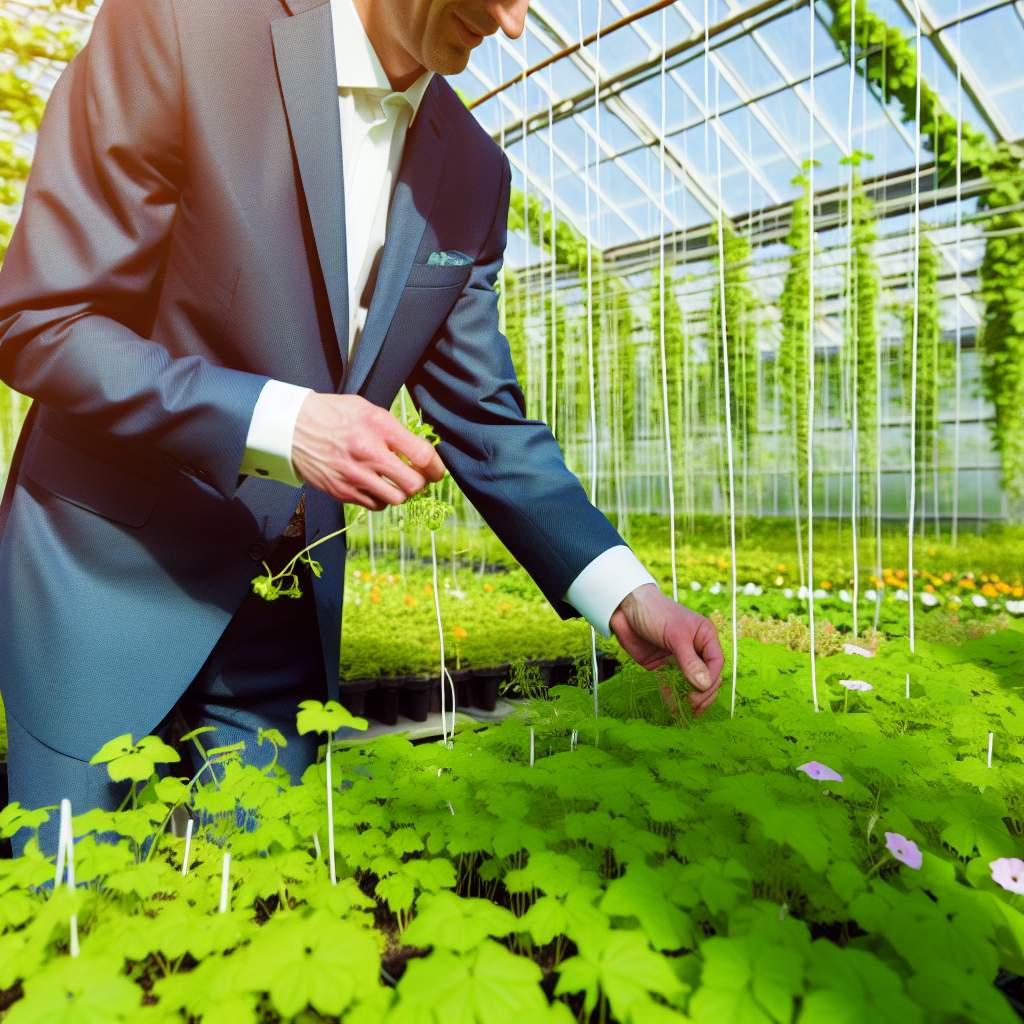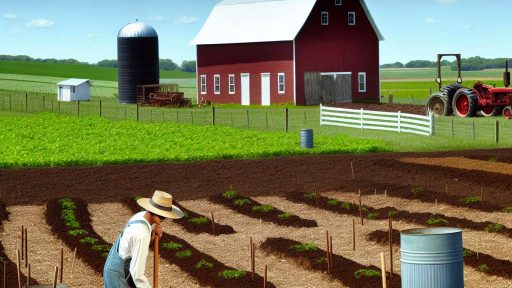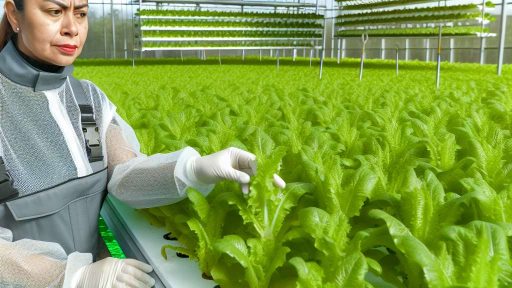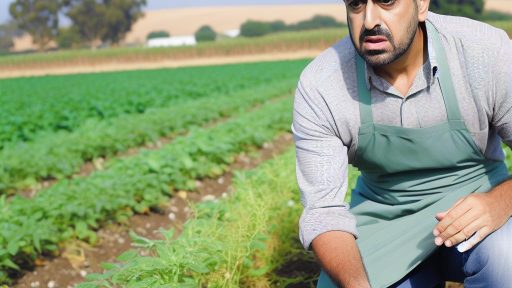Introduction to Greenhouse Cultivation in Real Estate Investment
Greenhouse cultivation has emerged as a promising opportunity for real estate investors.
This method allows the growth of crops in a controlled environment.
As a result, investors can maximize yield while minimizing risk.
Understanding the Basics of Greenhouse Cultivation
Greenhouse cultivation involves creating a protective environment for plants.
It helps optimize growing conditions, such as temperature and humidity.
Moreover, greenhouse farming extends the growing season beyond traditional limits.
Benefits of Greenhouse Cultivation for Investors
Investors can benefit from various aspects of greenhouse cultivation.
- Enhanced crop yield can lead to increased profitability.
- Growing high-demand crops can attract premium prices.
- Control over environmental conditions reduces dependency on weather.
- Potential for organic certification can open new markets.
Challenges to Consider
While greenhouse cultivation presents opportunities, it also has challenges.
Initial investment costs can be high for setup and equipment.
Maintaining optimal conditions requires ongoing management and expertise.
Additionally, market fluctuations can impact profitability.
Strategic Planning for Real Estate Investors
Investors should engage in thorough market research before starting.
Identifying local demand for specific crops can guide decisions.
Furthermore, evaluating zoning laws and regulations is crucial.
Establishing connections with local distributors can also enhance market access.
Transform Your Agribusiness
Unlock your farm's potential with expert advice tailored to your needs. Get actionable steps that drive real results.
Get StartedBenefits of Incorporating Greenhouses into Real Estate Projects
Increased Property Value
Greenhouses can significantly enhance property value.
They attract environmentally-conscious buyers and investors.
Additionally, these structures provide unique outdoor living spaces.
Revenue Generation Opportunities
Real estate investors can create additional income streams through greenhouses.
Grow fruits and vegetables for local markets and restaurants.
This approach diversifies income sources and reduces risks.
Environmental Benefits
Greenhouses use sustainable practices, reducing carbon footprints.
They promote biodiversity by providing habitats for various species.
Moreover, they can utilize rainwater and renewable energy sources.
Enhanced Aesthetic Appeal
Greenhouses add a unique visual element to properties.
They can serve as stunning focal points in landscapes.
In addition, greenhouses can beautify unused spaces.
Community Engagement
Including greenhouses fosters community involvement and education.
They can host workshops on sustainable gardening and local food systems.
This aspect encourages stronger community ties and networks.
Adaptability to Various Markets
Greenhouses can fit numerous real estate settings, from urban to rural areas.
They can serve residential, commercial, or educational purposes.
Ultimately, versatility increases investment appeal and marketability.
Key Factors for Successful Greenhouse Design and Construction
Site Selection
Choosing the right site is crucial for greenhouse success.
Consider climate, sunlight, and wind exposure during selection.
Avoid locations prone to floods or excessive shade.
Accessibility for maintenance and transportation also matters.
Greenhouse Structure
The structure’s design impacts crop growth significantly.
Select durable materials to withstand local weather conditions.
Showcase Your Farming Business
Publish your professional farming services profile on our blog for a one-time fee of $200 and reach a dedicated audience of farmers and agribusiness owners.
Publish Your ProfileConsider ventilation options to regulate temperature and humidity.
Ensure the design accommodates future expansions or modifications.
Climate Control Systems
Effective climate control systems enhance plant health and yield.
Implement heating, cooling, and ventilation systems as needed.
Integrate automated monitoring for temperature and humidity levels.
Consider energy-efficient options to reduce operational costs.
Lighting Solutions
Proper lighting supports plant growth, especially in winter.
Utilize natural light to minimize electricity usage.
Supplement with artificial lighting when necessary to optimize growth.
Select the right spectrum of light for different plant stages.
Irrigation Systems
A reliable irrigation system ensures consistent water supply.
Integrate drip irrigation or hydroponic systems for efficiency.
Monitor water quality to promote healthy plant growth.
Consider rainwater harvesting systems to reduce costs.
Soil and Fertility Management
Quality soil supports healthy plant roots and growth.
Test soil regularly for nutrient levels and pH balance.
Incorporate organic fertilizers to promote soil health.
Consider crop rotation to maintain soil fertility over time.
Pest and Disease Control
Pest management is vital for maintaining crop quality.
Implement integrated pest management (IPM) practices.
Regularly monitor for signs of pests or diseases.
Utilize biological controls where possible to reduce chemical use.
Financial Considerations
Budgeting is essential for greenhouse design and construction.
Estimate initial costs, including materials and labor.
Factor in ongoing operational costs and maintenance expenses.
Consider potential return on investment based on market demand.
Explore Further: Crop Disease Management for Protecting Agricultural Land Value
Understanding the Different Types of Greenhouse Structures and Their Uses
Framed Greenhouses
Framed greenhouses are popular due to their sturdy construction.
They consist of a support frame made from wood, aluminum, or galvanized steel.
This structure provides strong resistance to harsh weather conditions.
Additionally, framed greenhouses offer excellent insulation and longevity.
These greenhouses are perfect for a wide range of plants, from vegetables to flowers.
Hoop Houses
Hoop houses are simple and cost-effective structures.
Their design employs flexible tubing covered with plastic or fabric.
This makes them easy to set up and take down as needed.
Hoop houses extend the growing season significantly.
They work well for gardeners seeking affordable options.
Cold Frames
Cold frames are small, enclosed structures designed to protect plants from cold weather.
They usually consist of a transparent lid supported by a wooden frame.
These structures trap heat from sunlight, keeping plants warm during cooler months.
Showcase Your Farming Business
Publish your professional farming services profile on our blog for a one-time fee of $200 and reach a dedicated audience of farmers and agribusiness owners.
Publish Your ProfileCold frames allow gardeners to start seedlings earlier in the spring.
They are also useful for overwintering certain plants.
Glass Greenhouses
Glass greenhouses offer a classic aesthetic and optimal light transmission.
They are sturdy and can withstand extreme weather conditions.
These greenhouses allow for better temperature control and ventilation.
Glass structures are ideal for serious horticulturists and commercial growers.
The higher cost may be justified by their durability and aesthetics.
Geodesic Domes
Geodesic dome greenhouses feature a unique design that maximizes interior space.
This design enhances light penetration and creates stable airflow.
Dome structures offer excellent strength and resistance to wind and snow loads.
This makes them suitable for diverse climates.
Geodesic domes are also visually striking and innovative.
Utilizing Greenhouses for Real Estate Investments
Investors can benefit significantly from greenhouse cultivation.
These structures can increase property values through innovative agricultural production.
Additionally, greenhouses can provide a reliable source of income from crop sales.
The sustainability aspect adds to the appeal for potential buyers.
Furthermore, greenhouse projects can attract eco-conscious tenants or clients.
Gain More Insights: Smart Irrigation Methods for Sustainable Crop Cultivation on Land
Evaluating Market Demand for Greenhouse-Grown Produce in Real Estate Areas
Understanding Consumer Preferences
Consumer preferences for greenhouse-grown produce are evolving rapidly.
Many individuals prioritize freshness and sustainability in their food choices.
Consequently, real estate investors must adapt to these changing trends.
Surveys indicate that shoppers prefer local produce over imported options.
Identifying Target Markets
Investors should identify areas with a high potential for green-minded consumers.
Urban settings often exhibit greater demand for fresh produce.
Additionally, affluent neighborhoods may show a stronger inclination toward organic vegetables.
These communities often seek out sustainable living options.
Analyzing Competitor Landscape
Assessing existing greenhouse operations can provide valuable insights.
Investors should evaluate competitors’ product offerings and pricing strategies.
Understanding their successes and challenges helps in strategic planning.
A comprehensive analysis reveals gaps in the market that can be filled.
Utilizing Data-Driven Approaches
Employing data analytics enhances the decision-making process.
Market research reports can highlight consumer buying patterns.
A data-driven strategy supports investor confidence in greenhouse investments.
Furthermore, online sales trends offer critical insights into consumer behavior.
Leveraging Local Partnerships
Building relationships with local grocery stores can boost visibility.
Additionally, forming partnerships with restaurants can create demand.
Collaborations with community-supported agriculture could enhance market reach.
Local engagement strengthens community ties and increases sales opportunities.
Forecasting Future Demand Trends
Staying informed about agricultural innovations is crucial.
The rise of hydroponics and vertical farming can impact market dynamics.
Showcase Your Farming Business
Publish your professional farming services profile on our blog for a one-time fee of $200 and reach a dedicated audience of farmers and agribusiness owners.
Publish Your ProfileFurthermore, understanding climate change effects aids in future planning.
Investors should anticipate shifts in consumer expectations related to sustainability.
Explore Further: Essential Greenhouse Construction Tips For Emerging Farmland Investors
Sustainable Practices in Greenhouse Cultivation
Understanding Sustainable Cultivation
Sustainable cultivation focuses on environmental health and resource management.
This practice encourages the responsible use of inputs like water and nutrients.
It minimizes waste and promotes biodiversity in greenhouse operations.
Implementing Efficient Water Use
Efficient water use is essential for sustainable greenhouse cultivation.
Consider drip irrigation systems to deliver water directly to plant roots.
These systems reduce evaporation and water waste significantly.
Additionally, reusing greenhouse condensation can further enhance water efficiency.
Utilizing Renewable Energy Sources
Incorporating renewable energy sources can minimize operational costs.
Solar panels can provide electrical power for greenhouse operations.
Wind turbines also offer another option for clean energy production.
These systems reduce reliance on fossil fuels and lower carbon footprints.
Implementing Integrated Pest Management
Integrated Pest Management (IPM) is vital for maintaining plant health.
This approach combines biological, cultural, and mechanical controls.
IPM helps reduce chemical pesticide usage while ensuring crop protection.
For instance, introducing beneficial insects can naturally control pest populations.
Focus on Soil Health
Healthy soil supports productive plant growth and resilience.
Regularly testing soil can determine nutrient levels and pH balance.
Adding organic matter enhances soil structure and boosts microbial activity.
Crop rotation and cover cropping also contribute to sustainable soil management.
Choosing Sustainable Crops
Selecting the right crops can significantly impact sustainability efforts.
Opt for native or drought-resistant varieties to reduce water needs.
These choices can enhance resilience to pests and changing climate conditions.
Additionally, prioritizing high-value crops can improve profitability.
Adopting Eco-Friendly Materials
Using eco-friendly materials can reduce the environmental impact of cultivation.
Consider biodegradable pots as an alternative to plastic containers.
Recycled materials can also serve as effective greenhouse structures.
Moreover, sourcing local materials reduces transportation emissions.
Uncover the Details: Harvesting Methods for Diversified Farmland Investments

Financing Options and Grants for Greenhouse Development in Real Estate
Understanding Financing Options
Investing in greenhouse development requires careful financial planning.
Real estate investors can explore various financing avenues.
Traditional bank loans remain a popular choice.
These loans often offer competitive interest rates.
Investors may also consider credit unions for favorable terms.
Alternatively, private lenders can provide quick funding solutions.
However, these loans might come with higher interest rates.
Another option is crowdfunding, gaining popularity among investors.
This allows multiple individuals to contribute to a single project.
Showcase Your Farming Business
Publish your professional farming services profile on our blog for a one-time fee of $200 and reach a dedicated audience of farmers and agribusiness owners.
Publish Your ProfileMoreover, peer-to-peer lending platforms can facilitate quick funding.
Exploring Grants and Subsidies
Various grants and subsidies support greenhouse development.
Local and state governments often provide funding opportunities.
These programs encourage sustainable agriculture initiatives.
Investors can research specific grants that cater to their region.
For example, the USDA offers several agricultural grants.
These can significantly reduce development costs.
Additionally, environmental organizations may offer funding.
The focus here is often on eco-friendly practices.
Investors should stay informed about application deadlines.
Securing a grant can enhance project viability.
Leveraging Tax Incentives
Tax incentives can further improve financial outcomes for investors.
States may offer tax credits for agricultural developments.
Investors can reduce their tax liabilities significantly.
Sustainable practices often attract additional incentives.
Consulting a tax professional can uncover potential savings.
Moreover, local tax abatement programs might be available.
These programs can offer temporary relief on property taxes.
Formulating a Financial Strategy
A well-structured financial strategy is crucial for success.
Real estate investors should assess their budget carefully.
Creating a detailed business plan can establish direction.
This plan should account for all potential costs and revenues.
Moreover, understanding cash flow projections is essential.
Investors should include contingencies for unexpected expenses.
Networking with industry experts can provide valuable insights.
Lastly, continuously monitor financial performance post-investment.
Case Studies: Successful Greenhouse Ventures in Real Estate Investments
Innovative Approaches to Greenhouse Development
Real estate investors increasingly explore innovative greenhouse ventures.
These projects blend agriculture with real estate for sustainable profits.
For instance, GreenLeaf Properties launched a greenhouse complex in California.
This venture efficiently utilized previously underdeveloped land.
It produced organic vegetables, catering to local markets.
Consequently, the project yielded impressive returns for investors.
Urban Greenhouses: A New Trend
Urban areas see a rise in greenhouse investments.
CityFarm Co. converted a vacant warehouse into a thriving greenhouse.
This initiative provided fresh produce to urban communities.
Moreover, it improved property values in the surrounding area.
Overall, the project contributed positively to the urban landscape.
Collaborations with Local Farmers
Successful ventures often involve partnerships with local farmers.
HarvestHaven partnered with local organic farmers to establish a greenhouse.
This collaboration enhanced production while sharing resources.
Showcase Your Farming Business
Publish your professional farming services profile on our blog for a one-time fee of $200 and reach a dedicated audience of farmers and agribusiness owners.
Publish Your ProfileFarmers provided expertise, while investors funded infrastructure.
As a result, both parties benefited from increased market access.
Utilizing Renewable Energy Sources
Renewable energy plays a pivotal role in greenhouse projects.
EcoGrow expanded its greenhouse utilizing solar panels for energy.
This approach reduced operational costs significantly.
Moreover, it appealed to environmentally conscious consumers.
Such initiatives showcase how sustainability boosts profitability.
Long-Term Success through Community Engagement
Engaging with local communities fosters long-term success.
For example, GreenBounty Farms organized educational workshops.
These events raised awareness about sustainable practices.
As a result, community support strengthened the investment’s position.
The venture became a symbol of innovation and collaboration.
Potential Challenges and Solutions
Investors must navigate challenges in greenhouse ventures.
Market competition can be fierce, impacting profitability.
Implementing strategic marketing can mitigate this challenge.
Furthermore, understanding local regulations is crucial.
To address this, investors should conduct thorough research.
Partnerships with local authorities can help streamline processes.
The Future of Greenhouse Investments
The future of greenhouse investments looks promising.
As demand for fresh produce grows, so do opportunities.
Innovative technologies will enhance productivity and sustainability.
Investors should stay informed about market trends.
This knowledge will shape their investment strategies effectively.
Ultimately, blending real estate with greenhouse cultivation can yield positive results.
Future Trends in Greenhouse Cultivation and Real Estate
Emerging Technologies
New technologies continue to transform greenhouse cultivation.
Automation tools enhance efficiency in planting and harvesting.
Smart sensors monitor plant health and resource needs.
Additionally, AI-driven systems optimize environmental conditions.
Sustainable Practices
Sustainability remains a key focus in agriculture.
Greenhouses are increasingly using renewable energy sources.
Water conservation techniques are becoming standard practice.
Moreover, organic growing methods attract consumer interest.
Market Opportunities
As demand for local produce rises, market opportunities expand.
Investors can capitalize on urban agriculture trends.
Community-supported agriculture (CSA) programs gain popularity.
Furthermore, direct-to-consumer sales are becoming more common.
Real Estate Integration
The integration of greenhouses into real estate development offers benefits.
Mixed-use properties can incorporate greenhouse spaces to attract buyers.
Real estate investors see potential in sustainable living trends.
As cities prioritize green spaces, adaptable strategies emerge.
Showcase Your Farming Business
Publish your professional farming services profile on our blog for a one-time fee of $200 and reach a dedicated audience of farmers and agribusiness owners.
Publish Your ProfileImplications for Future Investments
The future of greenhouse cultivation is bright for investors.
Adapting to technological advances and sustainability is crucial.
Investors who embrace these changes will see successful returns.
Ultimately, aligning with consumer preferences will drive growth.
Additional Resources
Maximizing Production in Small-Scale Flower Farming: Tips for …




